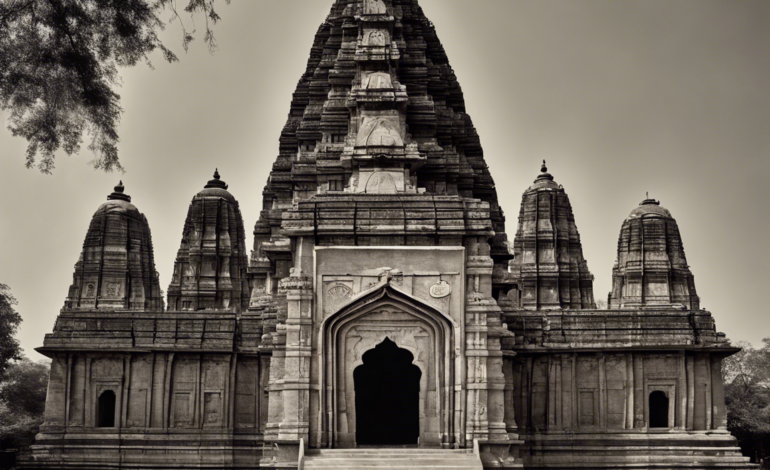Discover the Spiritual Essence of Bodh Gaya: A Traveler’s Guide.

In the heart of Bihar, India, lies a place of profound spiritual significance – Bodh Gaya. This small town is revered by millions of people around the world as the place where Siddhartha Gautama attained enlightenment and became the Buddha. Pilgrims and travelers from all walks of life journey to Bodh Gaya to experience the spiritual energy that permeates this sacred land. In this comprehensive guide, we will delve into the spiritual essence of Bodh Gaya, offering insights into its history, significance, and the transformative experiences it offers to those who visit.
History of Bodh Gaya
Bodh Gaya is home to the Mahabodhi Temple, a UNESCO World Heritage Site and one of the oldest brick structures in eastern India. The temple marks the spot where the Buddha is said to have sat under the Bodhi Tree and attained enlightenment over 2,500 years ago. The origins of the temple can be traced back to the reign of Emperor Ashoka, a devout Buddhist who visited Bodh Gaya in the 3rd century BCE and erected a stupa to commemorate the Buddha’s enlightenment. The temple complex has been rebuilt and expanded over the centuries, with the current structure dating back to the 5th-6th century CE.
Significance of Bodh Gaya
For Buddhists, Bodh Gaya is one of the Four Holy Sites associated with the life of the Buddha, along with Lumbini (his birthplace), Sarnath (where he gave his first sermon), and Kushinagar (where he passed away). It is considered the most sacred of these sites, as it is where the Buddha’s spiritual journey reached its culmination. The Mahabodhi Temple is the focal point of pilgrimage for Buddhists from around the world, who come to meditate, offer prayers, and pay homage to the Buddha.
Experiencing the Spiritual Essence
Visiting Bodh Gaya is a transformative experience that touches the heart and soul of those who make the journey. The spiritual essence of the place can be felt in every corner, from the tranquil gardens surrounding the temple to the Vajrasana (Diamond Throne) where the Buddha is believed to have meditated. Pilgrims often circumambulate the temple, spinning prayer wheels and chanting mantras as they absorb the energy of the sacred site.
Practices and Rituals
Meditation is a central practice for those seeking to deepen their spiritual awareness at Bodh Gaya. Many visitors spend hours in quiet contemplation under the Bodhi Tree, seeking inner peace and clarity. Offering flowers, candles, and incense at the temple is a common ritual, symbolizing devotion and gratitude to the Buddha. The sound of monks chanting sutras fills the air, creating a reverent atmosphere that invites contemplation and reflection.
Exploring Bodh Gaya
Beyond the Mahabodhi Temple, Bodh Gaya offers a wealth of spiritual landmarks and monasteries to explore. The Great Buddha Statue, an imposing 80-foot tall figure of the Buddha, overlooks the town and serves as a symbol of peace and enlightenment. The Sujata Stupa commemorates the kindness of a woman named Sujata, who offered the Buddha a bowl of rice milk before his enlightenment. The Japanese Peace Pagoda and Tibetan Monastery are also worth visiting for their unique architecture and serene ambience.
Spiritual Retreats and Workshops
For those seeking a deeper immersion into Buddhist teachings and practices, Bodh Gaya offers a variety of retreats and workshops led by experienced teachers and monks. These programs often include meditation sessions, dharma talks, and mindfulness practices designed to cultivate inner peace and wisdom. Retreat participants have the opportunity to engage with like-minded individuals and delve into the deeper teachings of Buddhism in a supportive and nurturing environment.
Practical Tips for Visitors
- Visiting Hours: The Mahabodhi Temple is open from sunrise to sunset, with special ceremonies held in the early morning and evening.
- Footwear: It is customary to remove your shoes before entering the temple complex, so wearing slip-on shoes or sandals is recommended.
- Respect: Bodh Gaya is a sacred site, so dress modestly and avoid loud conversations or behavior that may disturb others.
- Accommodation: There are a range of hotels and guesthouses in Bodh Gaya to suit different budgets, but it is advisable to book in advance during peak pilgrimage seasons.
- Local Cuisine: Don’t miss the opportunity to sample traditional Bihari dishes such as litti chokha and sattu paratha during your stay in Bodh Gaya.
Frequently Asked Questions (FAQs)
Q1: What is the best time to visit Bodh Gaya?
A1: The best time to visit Bodh Gaya is during the winter months from October to March when the weather is cool and pleasant.
Q2: Can I join meditation sessions at the Mahabodhi Temple?
A2: Yes, meditation sessions are held regularly at the Mahabodhi Temple, and visitors are welcome to participate.
Q3: Are there any restrictions on photography at Bodh Gaya?
A3: Photography is allowed in most areas of Bodh Gaya, but it is respectful to ask for permission before taking pictures of monks or sacred objects.
Q4: How do I get to Bodh Gaya?
A4: Bodh Gaya is well-connected by road, rail, and air. The nearest airport is in Gaya, and the town is also accessible by train and bus.
Q5: Can I stay overnight at the Mahabodhi Temple?
A5: While overnight stays are not permitted at the temple itself, there are many hotels and guesthouses in Bodh Gaya where you can find accommodation.
In conclusion, Bodh Gaya is a place steeped in spiritual energy and historical significance, offering a sanctuary for seekers of truth and enlightenment. Whether you are a devout Buddhist or simply a curious traveler, a visit to Bodh Gaya is sure to leave a lasting impression on your heart and mind. Embrace the spiritual essence of this sacred town, meditate under the Bodhi Tree, and allow the wisdom of the Buddha to illuminate your path.



